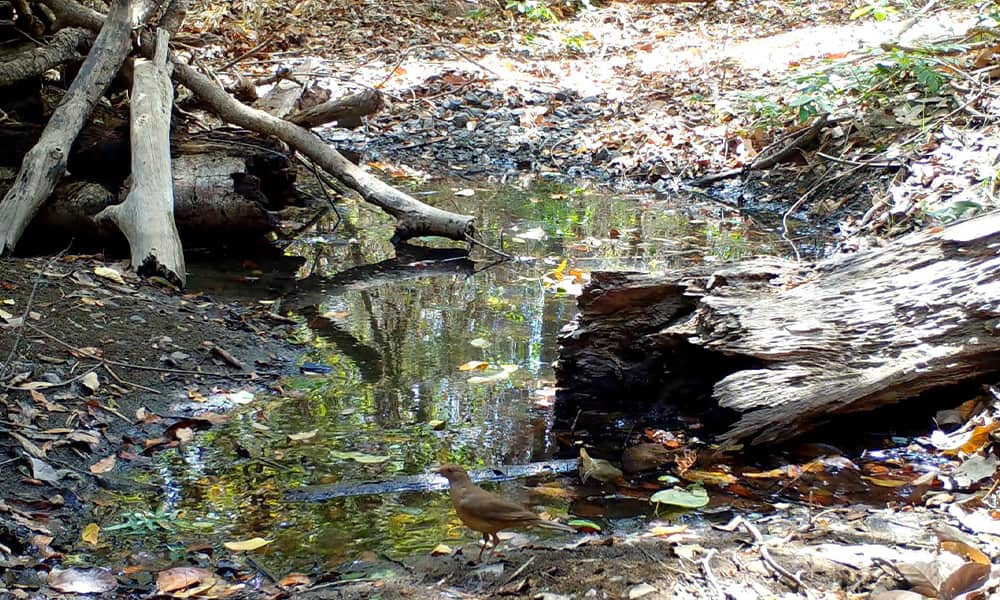Wildlife in Costa Rica brags something like 903 different species of birds. There are forest birds, freshwater birds, and ocean birds. There are birds that barely measure 3 inches long, and there are birds that are significantly taller than my seven-year-old son. There are birds that are every color of the rainbow. So which bird, of the nearly one thousand, did they choose to be Costa Rica’s national bird? Meet the clay-colored robin.
The clay-colored robin or clay-colored thrush looks about as jazzy as its name. It’s all brown with brown legs and brown eyes. The most pizazz it brings to the table is its yellowish-green bill. Its scientific name is (Turdus grayi) which isn’t too flattering because now the brown bird has ‘turd’ associated with it. In Spanish it is known as el yigüirro, which immediately terrifies any non-native Spanish-speaker because we don’t know what that u with two dots over it means. The pronunciation, more or less, is – yee gweer rooh.
So why, in this tropical paradise of varied and beautiful birds, is the clay-colored robin the national bird? There are actually two good reasons. First, and this probably isn’t an unofficial reason, is that it can be found throughout the country, in almost all habitats, including your patch-of-grass backyard in San Jose.
So rather than having the national bird be one that’s strikingly beautiful, but only found in one small corner of the country, they chose one that everybody gets to enjoy.
The second, more official reason that this bird carries the avian flag for Costa Rica, is based on its ability to sing. I encourage you to look up the audio online and have a listen.
It’s very pretty. Even my bird book’s description makes it sound nice – a caroling of varied phrases, rich and melodious, containing whistles, warbles, short trills, and piercing notes. The timing of this pretty song on the Tico calendar is the reason it’s the national bird. They sing, nearly non-stop, during mating season from March through June and are said to ‘call the rains’ back to a parched landscape.
So what does the national bird do with itself beside sing and make it rain? They do a lot of hopping on the ground, looking for food. The bop about, turning over leaflitter, looking for earthworms, insects, and fruit, with the occasional small lizard thrown in. I’ve personally seen one grab a scorpion and smash it on the ground repeatedly until it was limp and then scarf the whole thing down in one bite. So scorpions are definitely on the menu.
During my wildlife monitoring travels around the country, I’ve seen the clay-colored robin hundreds of times. I usually don’t think much of it, except occasionally, ‘Huh, that’s the national bird.’ I record them frequently with my camera traps, sometimes alone, sometimes in small groups. They are particularly easy to record in Guanacaste around puddles of water in the depths of dry season doing the same thing all of the other birds are doing, splashing around and getting a drink.
Take a look at the video below and meet Costa Rica’s national bird, the clay-colored robin.
About The Author
Vincent Losasso, founder of Guanacaste Wildlife Monitoring, is a biologist who works with camera traps throughout Costa Rica. Learn more about his projects at: Instagram and facebook or by email.

